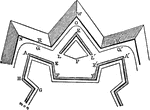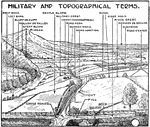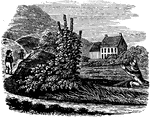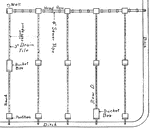Clipart tagged: ‘ditch’

'Tis All for the Best
The picture describes a story about a traveler who encounters a terrible storm and because he cannot…

Curtain
"Curtain, in Fortification, is the portion of rampart or wall between two bastions or two gates. In…
Section of Field and Lateral Ditch
"From the reservoir, whether constructed on a large scale to hold storm water or of small size to receive…

Section of Raised Ditch
"It is desirable, however, on account of economy of expense and of water, that all ditches should be…

Military and Topographical Terms
Terms used to define features of the earth on a topographical map used by the military.
Covered Sap
In military affairs, a narrow ditch or trench by which approach is made to a fortress or designed place…
Double Sap
In military affairs, a narrow ditch or trench by which approach is made to a fortress or designed place…
Rectangular Sap
In military affairs, a narrow ditch or trench by which approach is made to a fortress or designed place…
Single Sap
In military affairs, a narrow ditch or trench by which approach is made to a fortress or designed place…

The Longest Way Round, is the Shortest Way Home
"These two boys have just been let out of school, and are returning home. Their father's house is seen…

